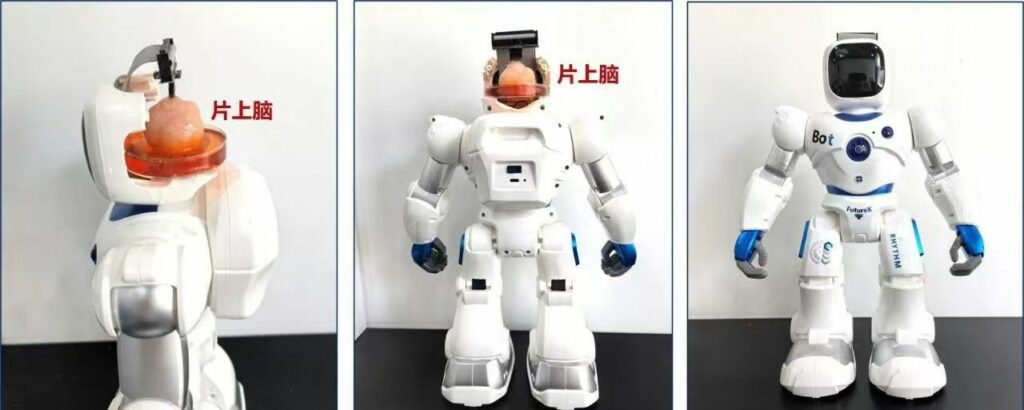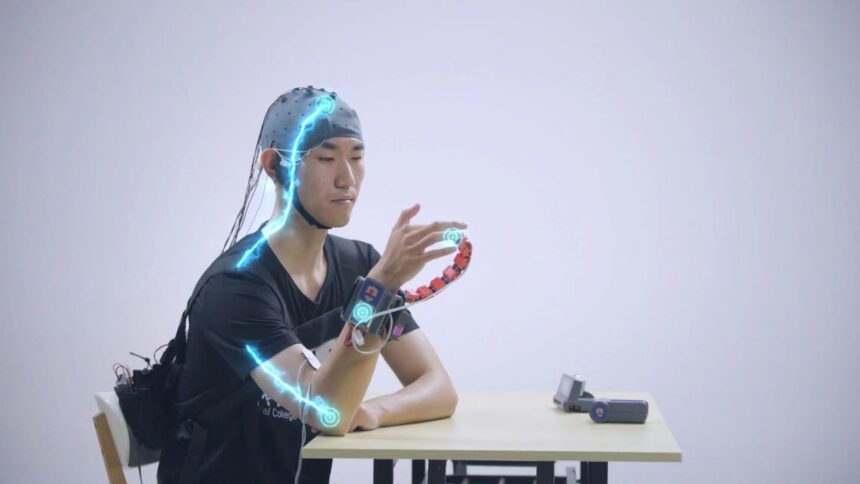Breakthroughs in Brain-Computer Interface Rehabilitation by Chinese Scientists
Chinese scientists have demonstrated significant success in brain-computer interface rehabilitation, bridging the gap between biological and artificial intelligence. This cutting-edge technology is revolutionizing the way paralyzed patients regain control over their lives.
Controlling Devices with Thoughts
In a recent video aired by China Central Television (CCTV), a paralyzed man named Bai was shown controlling his wheelchair using only his thoughts. This achievement is part of ongoing brain-computer interface rehabilitation research. Bai, who lost mobility after a car accident, directs his wheelchair by focusing his attention and imagining movements. “The system is quite sensitive,” Bai shared, highlighting the effectiveness of this technology.
Development of Minimally Invasive BCI Systems
In December 2023, a team from Tsinghua University implanted a wireless, minimally invasive brain-computer interface (BCI) system known as NEO into Bai’s brain. This advancement in brain-computer interface rehabilitation allows Bai to control both a computer and his wheelchair using brain signals. Hong Bo, a leading researcher from Tsinghua University, confirmed the successful signal control achieved through this BCI system.

Expanding Clinical Trials for Wider Access
Another patient, Yang, who had been paralyzed for 14 years, also benefited from Tsinghua’s BCI system. Yang can now control an exoskeleton glove with his mind, regaining partial hand function. Hong emphasized that these successes pave the way for expanded clinical trials, aiming to make BCI rehabilitation a commercially viable service for a broader patient population.
BCI Technology and Its Global Impact
BCI technology establishes a direct communication pathway between the brain’s nerves and electronic or mechanical devices. This innovation is crucial in the emerging “era of neuroscience.” The global BCI market is expected to reach $3.3 billion by 2027, with a 14% annual growth rate over the next seven years. Chinese scientists are at the forefront of this progress, particularly in BCI rehabilitation for conditions like paralysis, epilepsy, and depression.
Addressing Safety and Ethical Concerns
While brain-computer interface rehabilitation shows immense promise, it also raises safety and ethical concerns. Elon Musk’s Neuralink faced scrutiny after announcing its first human brain implantation surgery using an invasive BCI device in 2024. In contrast, Tsinghua’s wireless semi-invasive BCI technology offers higher safety and a longer product lifespan, making it a more sustainable option for BCI rehabilitation.
Advances in Non-Invasive BCI Technology
Additionally, Tianjin University is conducting clinical research on a wearable robotic finger called the Lingxi Finger. This non-invasive brain-computer interface rehabilitation system helps patients control machine fingers by reading their brainwave information. Early results show that this technology significantly accelerates patient recovery, offering new hope for those with neurological impairments.
Chinese scientists continue to push the boundaries of neuroscience, making groundbreaking strides in brain-computer interface rehabilitation. These developments are not only transforming the lives of individuals but also shaping the future of medical technology.

